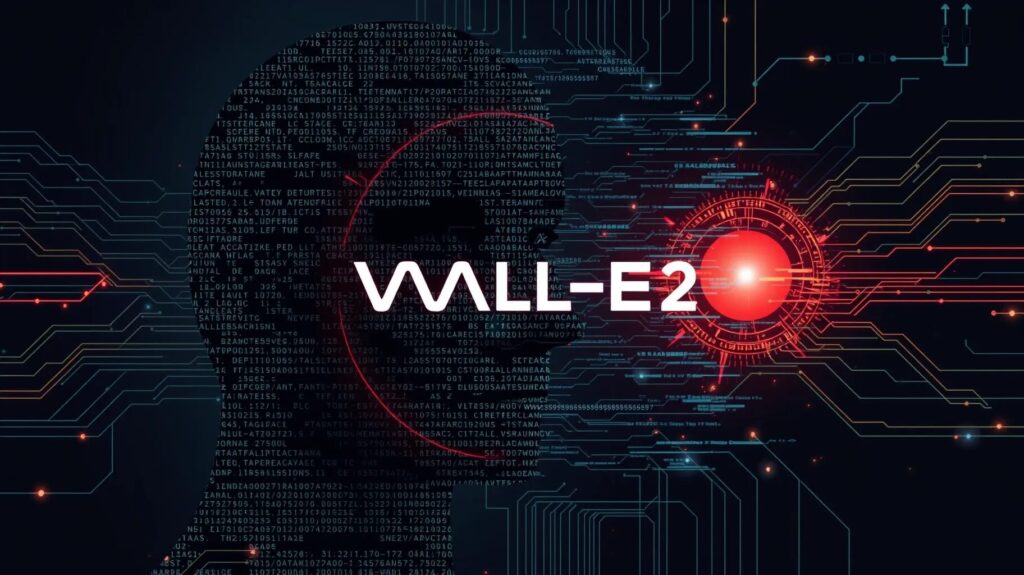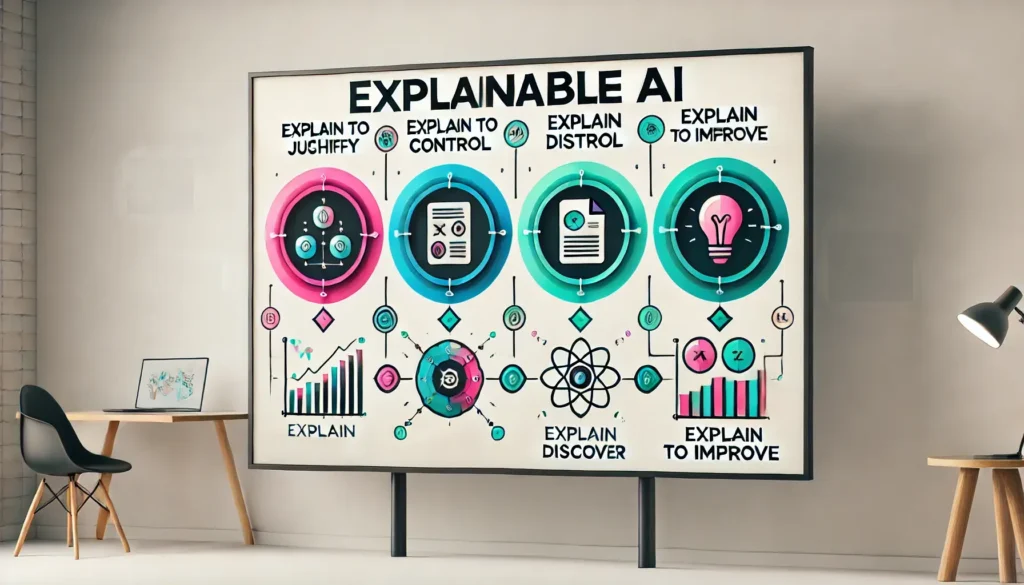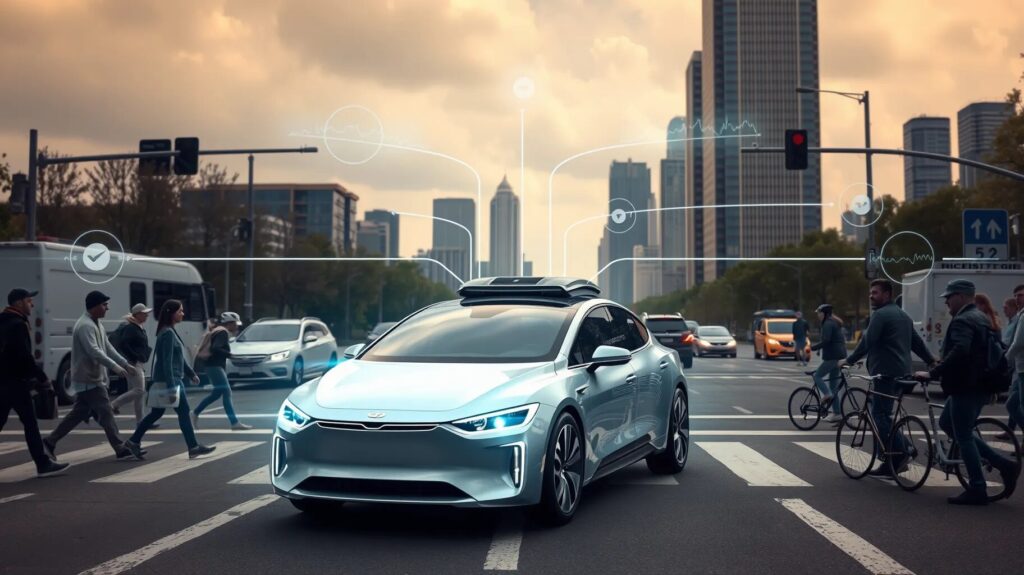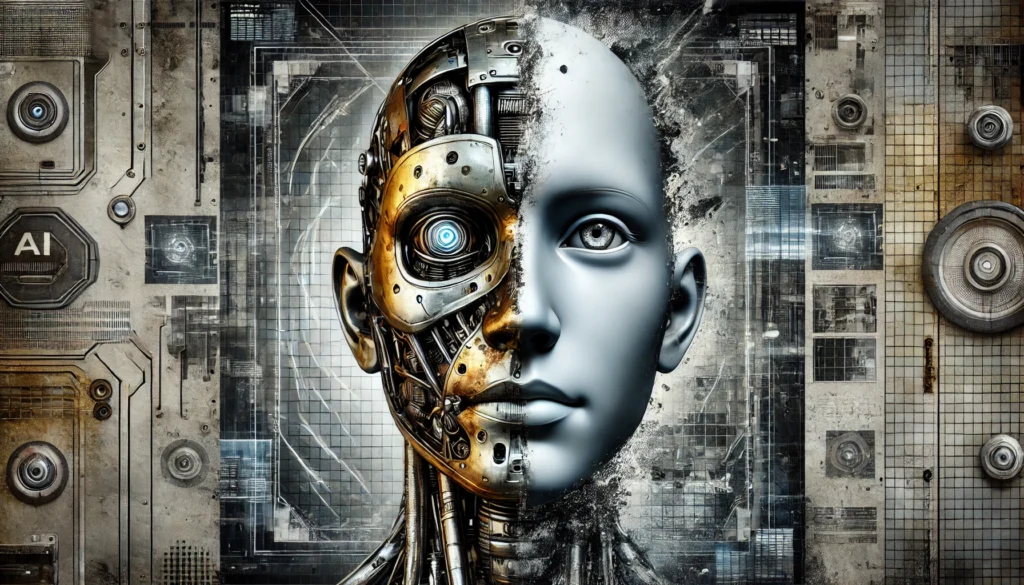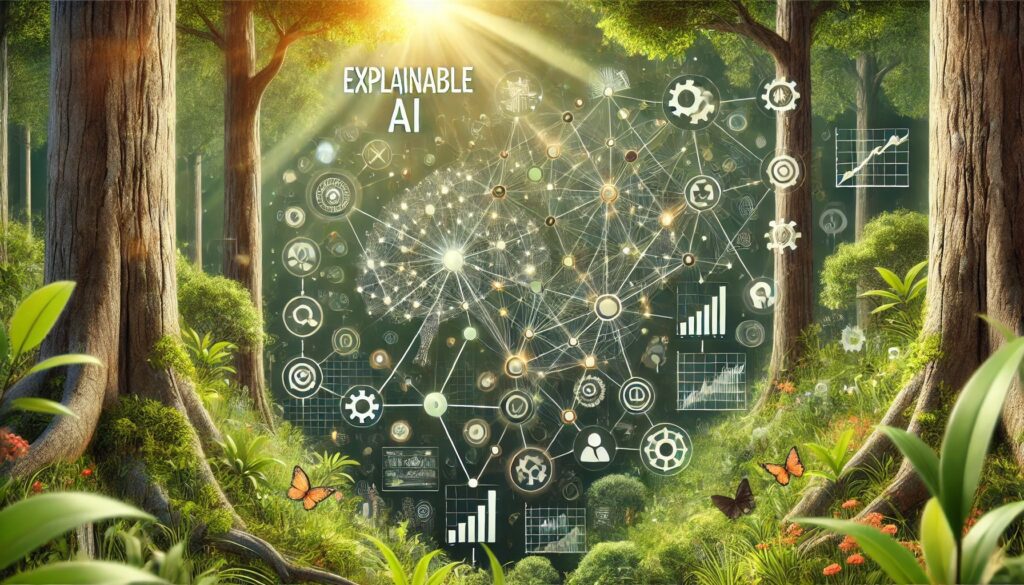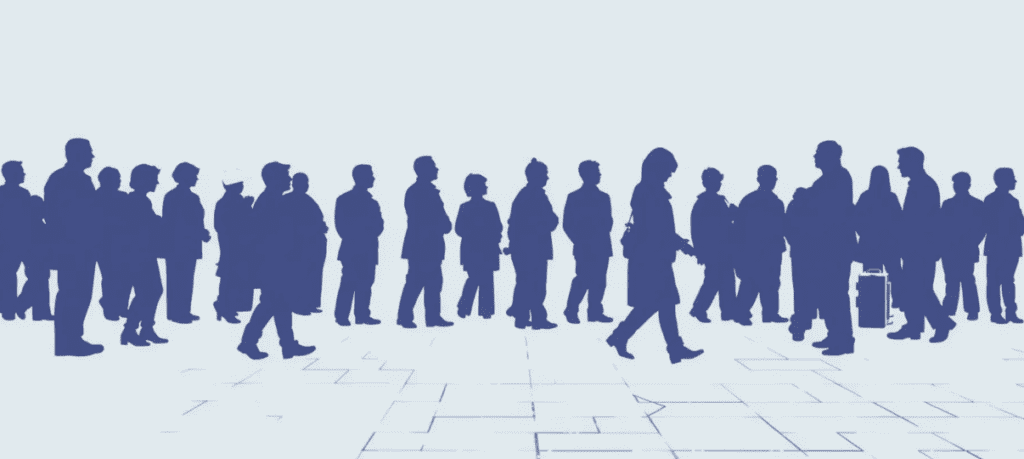
AI holds immense potential for innovation and progress. However, there’s a growing concern that AI may amplify existing social inequalities.
As AI becomes more prevalent in decision-making processes, it’s crucial to examine how these technologies can inadvertently reinforce biases, deepen divisions, and limit opportunities for certain groups.
Bias in AI Algorithms: A Digital Reflection of Society’s Inequities
AI systems are trained on data, often from historical or current datasets that reflect societal biases. These biases can then seep into the AI’s decisions. For example, AI models used in hiring processes have shown bias against women and minority groups due to skewed training data.
When an AI system relies on biased data, it risks perpetuating stereotypes. Hiring algorithms, credit assessments, and even healthcare AI models may favor certain demographics over others without any deliberate intent. The data it learns from could be laced with the biases of the past, leading to unequal outcomes in areas like employment, access to loans, or medical treatment.
Disproportionate Impact on Vulnerable Communities
AI’s ability to automate tasks and streamline processes is undeniably impressive, but it also raises questions about the long-term effects on marginalized groups. Communities that already face systemic challenges could find these issues amplified by AI-driven systems.
For instance, facial recognition software has been shown to misidentify people of color at much higher rates, leading to potential legal or social consequences for these individuals.
In areas like education and criminal justice, AI applications can entrench inequality if they’re not carefully designed. Predictive policing, for example, has been criticized for over-targeting minority communities, based on historical crime data. Without proper oversight, AI can lock people into a cycle of disadvantage.
Lack of Diversity in AI Development
The technology industry, particularly in AI, still lacks diversity. This lack of representation among developers and engineers leads to systems being built without considering the needs of all users. When those who are building the AI systems are not representative of the broader population, it’s likely that the resulting technologies will have blind spots.
This is especially true when it comes to gender and racial diversity. Without diverse perspectives in the room, certain groups may find that AI tools don’t adequately serve them—or worse, they may even harm them by reinforcing biases that they already face.
Automation and Job Displacement
One of the most immediate concerns with AI is the risk of job displacement. Automation, powered by AI, is increasingly being used in industries like manufacturing, customer service, and even white-collar professions. While automation can lead to efficiency and cost savings, it can also disproportionately affect workers in lower-income jobs, often held by minority and vulnerable groups.
If new opportunities created by AI and automation aren’t accessible to these communities—due to lack of access to education, training, or resources—AI will widen the economic gap between different social classes, exacerbating inequality.
Access to AI Benefits: A Privilege for the Few?
As AI becomes a more integral part of various sectors, the question of access becomes critical. Wealthier nations and communities have greater resources to adopt and leverage AI technologies, further widening the gap between them and disadvantaged areas.
Those with access to AI-driven healthcare, personalized education, or financial insights can enjoy significant benefits that others may never experience.

This creates a new form of inequality, where only those who can afford cutting-edge AI technologies benefit from its advantages, leaving the less privileged even further behind. The gap in digital literacy, compounded by economic inequality, means that some communities will fall behind in a world increasingly dominated by AI-driven systems.
Regulation and Accountability: Key to Preventing Inequality
To mitigate the risks of AI perpetuating social inequalities, it’s essential for governments, organizations, and developers to create systems of accountability. Regulating AI can help ensure that technologies are developed and implemented ethically, with safeguards in place to prevent bias and ensure fairness.
Developers should be transparent about how their systems are trained, and there must be processes to challenge AI decisions that appear discriminatory.
Moreover, policymakers need to work hand-in-hand with technologists to craft legislation that both encourages innovation and protects vulnerable communities. Without clear regulatory frameworks, the risk of AI reinforcing existing social divides remains high.
In conclusion, while AI holds great promise, it is crucial to address its potential to widen social inequalities. Through thoughtful design, diverse development teams, and strong regulations, we can ensure that AI benefits all, rather than deepening the divides that already exist.
Bias in AI Algorithms: A Digital Reflection of Society’s Inequities
AI systems are not inherently neutral. They are trained on data—historical and real-time—which often reflects the biases of the society from which it’s drawn. When AI uses biased datasets, it can perpetuate stereotypes and social inequalities.
For instance, AI tools in hiring have been found to favor certain demographics, largely because the training data may emphasize characteristics associated with historically advantaged groups.
This creates a feedback loop. AI continues to make decisions that mirror past inequalities. In criminal justice, for example, predictive policing tools tend to target minority neighborhoods disproportionately.
Since these areas may have been over-policed in the past, AI can misinterpret the data, reinforcing negative patterns of discrimination. The challenge lies in ensuring that AI doesn’t become a vehicle for biased decision-making.
Disproportionate Impact on Marginalized Communities
Communities that are already vulnerable to systemic disadvantages often bear the brunt of AI-driven systems. Consider facial recognition technology, which has consistently shown less accuracy in identifying people of color compared to white individuals.
These errors are not just technical glitches—they can have serious real-world consequences, like wrongful arrests or exclusion from certain services.

Moreover, AI-driven systems, such as automated credit scoring or job recruitment algorithms, might unfairly disqualify certain individuals. If an AI model is biased, it can limit opportunities for people who are already struggling, deepening the socioeconomic divide.
Vulnerable groups may find themselves further marginalized, making it harder to break free from cycles of poverty or discrimination.
Lack of Representation in AI Development
The people who create AI are pivotal to the systems’ design and impact. Unfortunately, the tech industry still lacks adequate diversity, particularly in gender and racial representation. This lack of diversity among AI developers means that many of the people building these systems may not fully grasp the needs or challenges faced by diverse populations.
When these critical perspectives are absent, AI products can be unintentionally skewed toward serving the majority demographic—often wealthy, white men—leaving others behind.
This can lead to products that are less effective or even harmful to underrepresented communities. Addressing this issue requires encouraging more diverse talent in tech, ensuring that AI technologies are designed with inclusivity in mind.
Job Displacement: AI as an Economic Disruptor
As AI becomes more prevalent, automation is replacing human workers in many industries. While AI can boost productivity and reduce costs, it also leads to job displacement. This impact is felt most acutely in industries that employ lower-wage workers, such as manufacturing, retail, and transportation.
Communities with limited access to advanced education or resources are at the greatest risk. Without proper retraining programs, displaced workers may struggle to find new employment.
This job loss could deepen the gap between rich and poor, as those with technical skills or access to AI-related opportunities thrive, while others fall behind. If AI adoption isn’t paired with efforts to reskill affected workers, economic inequality will likely grow.
Access to AI Benefits: A New Divide?
AI has the power to transform fields like healthcare, education, and finance, offering personalized treatments, tailored learning experiences, and improved financial planning. However, these benefits are often reserved for those who can afford cutting-edge technologies. Wealthier individuals and nations may enjoy these advancements, while poorer communities are left with outdated systems.
This creates a new kind of digital divide. Access to AI tools and the benefits they bring could become yet another privilege, enjoyed by the wealthy and unavailable to the disadvantaged.
This unequal access could reinforce existing social and economic divides, making it harder for underprivileged communities to catch up. The issue of AI equity will need to be addressed to prevent this from becoming a widening gulf.
AI’s Role in Widening the Education Gap
Education is one area where AI can either level the playing field or worsen existing inequalities. In wealthier communities, AI tools are being used to create personalized learning experiences, allowing students to learn at their own pace and focus on areas where they struggle. However, schools in underfunded areas often lack access to these advanced technologies.
This results in a disparity in educational outcomes. Students with access to AI-powered learning platforms receive more tailored instruction, potentially widening the gap between those who have and those who don’t.
Furthermore, biases in AI-driven educational tools, such as adaptive testing or grading software, may unfairly penalize students from marginalized backgrounds, especially if the data used to train these systems fails to account for different learning styles or cultural contexts.
The Ethics of Data Collection and Privacy Concerns
AI relies heavily on data collection to function effectively. However, the way this data is gathered, and the potential for misuse, raises ethical concerns. Marginalized communities may be more vulnerable to exploitation when it comes to the data they provide, whether through public surveillance, online activity, or healthcare systems. These groups often lack the same level of protection and privacy awareness as more affluent populations.
For example, low-income individuals may unwittingly offer up more personal data when using free or discounted digital services that come with hidden trade-offs. Companies and governments that use AI to process and interpret this data might inadvertently or intentionally reinforce stereotypes, deepening social divides.
The lack of transparency about how AI algorithms operate makes it even harder for vulnerable groups to protect their digital privacy and prevent their data from being used against them.
Healthcare Inequities in AI Diagnosis and Treatment
AI is transforming healthcare by enabling earlier diagnosis, more personalized treatments, and streamlined operations. Yet, without careful consideration, healthcare AI can also widen health disparities.
AI tools used in medical settings often rely on data from clinical trials or healthcare systems that primarily reflect the experiences of wealthy, predominantly white patients.
This can lead to diagnostic tools that are less accurate for people of color, women, or those with rare conditions. For example, studies have shown that AI used to diagnose skin conditions is less effective for darker skin tones because the training data didn’t include enough diverse skin types.
As AI becomes more integrated into healthcare, ensuring that these systems work for all populations is critical to avoiding a two-tiered healthcare system where some groups receive cutting-edge care, and others are left behind.
Financial Inequality and AI in the Economy
The use of AI in financial services, such as credit scoring, loan approvals, and even insurance pricing, has been both a boon and a burden. On the one hand, AI can streamline processes, making it easier and faster for people to apply for loans or insurance. On the other hand, these systems can perpetuate economic inequality by relying on biased data or flawed assumptions.
For example, AI-driven credit scoring systems might penalize individuals who don’t fit the traditional model of financial stability—those who may lack a long credit history or come from low-income backgrounds.
Similarly, AI might deny loans or charge higher interest rates based on data points that correlate with poverty, such as zip codes. This can trap certain populations in a cycle of financial exclusion, where access to opportunities like homeownership or education remains out of reach.
The Risk of AI in Political and Social Control
AI technologies are increasingly being adopted by governments for surveillance and governance purposes. While AI can improve efficiency in public services, there’s a risk that it can be used to reinforce social inequalities by targeting specific groups for surveillance or control.
For example, facial recognition software, which has been criticized for its inaccuracies, is often deployed in public spaces and disproportionately affects minority groups.
In some countries, AI-driven surveillance is used to monitor political dissent, and those in marginalized communities can face harsher scrutiny. This raises concerns about AI being used as a tool for social control, where the most vulnerable populations bear the brunt of invasive or discriminatory practices, while wealthier or more privileged citizens remain largely unaffected.
Resources
- AI Now Institute – A leading research institute focused on the social implications of AI, including its role in deepening inequality. AI Now Institute
- The Algorithmic Justice League – An organization that works to highlight and mitigate the biases in AI systems, advocating for more equitable AI development. Algorithmic Justice League
- World Economic Forum: AI and Social Inequality – This article explores how AI impacts inequality, with a focus on labor markets and education. World Economic Forum
